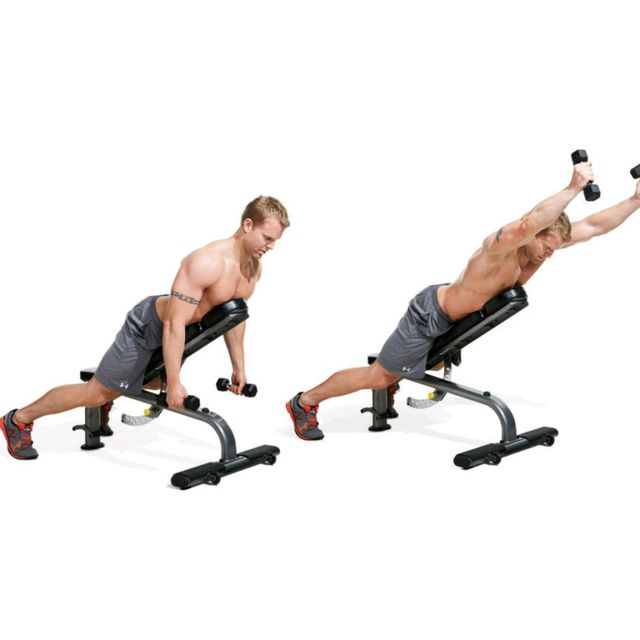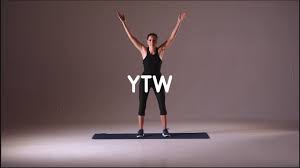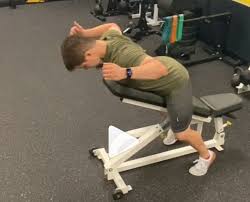

Are you tired of that “hunched neck” look every time you catch yourself in the mirror?
Whether it is from hours hunched over a computer or binge-watching your favorite shows, poor posture can lead to a rounded upper back and that infamous “hunch neck.”
But do not worry! There is a fun and effective solution: Y-T-W exercises.
These simple yet powerful movements can help strengthen your back muscles, improve your posture, and banish that hunch for good.
Ready to learn how to get rid of hunch neck with Y-T-Ws?
Let’s dive in!
“How to Get Rid of Hunch Neck with Y-T-W Exercises” Article Index
- Understanding Hunch Neck: What Causes It?
- Why Y-T-W Exercises Work for Fixing a Hunched Neck
- How to Perform Y-T-W Exercises Correctly
- The Benefits of Y-T-Ws for Hunch Neck
- Combining Y-T-Ws with Other Strategies to Fix Hunch Neck
- Common Mistakes to Avoid
- FAQs on Performing YTW Exercises to Remove Neck Hunch
- Conclusion: How Y-T-W Exercises Can Help You Stand Tall Again
Understanding Hunch Neck: What Causes It?
Hunch neck, often referred to as forward head posture or “text neck,” occurs when your head juts forward, placing extra strain on the neck and upper back muscles.
Over time, this leads to a rounded upper back and a hunched appearance.
This condition is typically caused by prolonged poor posture, such as slumping at a desk, looking down at a smartphone, or even sleeping in an awkward position.
Left unchecked, it can lead to chronic pain, stiffness, and even nerve compression.
Why Y-T-W Exercises Work for Fixing a Hunched Neck?
Y-T-W exercises are specifically designed to target the upper back and shoulder muscles, which play a crucial role in maintaining good posture.
By strengthening these muscles, you can counteract the effects of poor posture and help “pull” your shoulders back, thus improving your alignment.
- Y Exercise: The Y movement strengthens the lower trapezius muscles, which help control the scapulae and support the neck.
- T Exercise: The T position targets the middle trapezius and rhomboids, essential for retracting the shoulders and correcting rounded shoulders.
- W Exercise: The W shape engages the rotator cuff muscles, which stabilize the shoulder joint and improve shoulder positioning.
When these three exercises are combined, they create a balanced approach to correcting a hunched neck by addressing multiple muscle groups simultaneously.
How to Perform Y-T-W Exercises Correctly
A quick look at what all needs to be done properly:
1. “Y” Exercise:
- Position: Lie face down on a mat with your arms extended above your head, forming a “Y” shape.
- Movement: Squeeze your shoulder blades together and lift your arms off the ground, keeping your thumbs pointing up. Hold for 2-3 seconds and then lower back down.
- Reps: Perform 10-15 repetitions.
2. “T” Exercise:
- Position: Start in the same position but move your arms out to the sides, forming a “T” shape with your body.
- Movement: Lift your arms off the ground while squeezing your shoulder blades together. Keep your thumbs pointing up. Hold for 2-3 seconds and lower.
- Reps: Perform 10-15 repetitions.
3. “W” Exercise:
- Position: Bring your elbows down towards your waist to form a “W” shape with your arms.
- Movement: Lift your elbows and hands off the ground, squeezing your shoulder blades together. Hold for 2-3 seconds and lower back down.
- Reps: Perform 10-15 repetitions.
Pro Tip: Keep your neck in a neutral position throughout these exercises to avoid straining it further.
The Benefits of Y-T-Ws for Hunch Neck
Y-T-W exercises are a series of movements designed to target and strengthen the upper back and shoulder muscles, playing a crucial role in maintaining cervical neck health.
Beyond their primary benefits, several often-overlooked advantages make these exercises essential for a well-rounded fitness routine.
1. Strengthening Weak Muscles
Y-T-W exercises specifically engage the lower trapezius, latissimus dorsi, and erector spinae muscles.
Strengthening these muscles can improve posture and reduce the forward head tilt associated with a hunched neck.
The ‘Y’ movement, for example, targets the lower trapezius, which helps pull the shoulder blades down and back, counteracting the effects of prolonged sitting and forward head posture.
According to MindBodySpine, these exercises are particularly beneficial for individuals experiencing chronic postural imbalances.
2. Improving Shoulder Stability
These exercises enhance shoulder stability by focusing on the scapular muscles. A stable shoulder girdle is crucial for maintaining proper posture and preventing injuries.
The ‘T’ movement strengthens the middle trapezius and rhomboids, promoting better scapular retraction and shoulder alignment, which is essential for preventing shoulder impingement and instability.
3. Enhancing Flexibility and Mobility
Regularly performing Y-T-W exercises can improve the range of motion in the shoulders and upper back, facilitating an upright posture.
The ‘W’ movement engages the infraspinatus and teres minor, aiding in external rotation and flexibility of the shoulder joint.
As stated by MindBodySpine, improved mobility in these muscles helps individuals maintain better posture and reduce stiffness.
4. Reducing Neck and Upper Back Pain
By correcting muscle imbalances and improving alignment, Y-T-W exercises can alleviate discomfort associated with poor posture.
Strengthening the upper back reduces the strain on cervical muscles, thereby decreasing the incidence of neck pain.
Lederman Chiropractic highlights that these exercises help in preventing postural fatigue and muscular stress, reducing the risk of chronic pain.
5. Preventing ‘Tech Neck’ Syndrome
With increased screen time, many people develop ‘tech neck,’ characterized by forward head posture and associated discomfort.
Incorporating Y-T-W exercises into a daily routine can counteract these effects by reinforcing proper neck and shoulder alignment.
The Times reports that structured exercise routines, including Y-T-Ws, are effective in mitigating postural strain caused by prolonged device use.
6. Enhancing Athletic Performance
Athletes require robust upper back and shoulder muscles for optimal performance. Y-T-W exercises contribute to improved scapular stability and posture, which are essential for movements in sports like swimming, tennis, and baseball.
For instance, swimmers benefit from strengthened scapular muscles, leading to more efficient strokes and reduced injury risk.
Research by Stack.com indicates that proper postural training enhances overall sports performance and injury prevention.
7. Supporting Respiratory Function
An open chest posture facilitated by strong upper back muscles can enhance lung capacity and breathing efficiency.
By performing Y-T-W exercises, individuals can promote better expansion of the rib cage during respiration, which is particularly beneficial for those with sedentary lifestyles.
Correcting rounded shoulders allows for deeper, more efficient breathing, which is essential for endurance and overall health.
Incorporating Y-T-W exercises into a fitness regimen offers comprehensive benefits, from improved posture and pain reduction to enhanced athletic performance and respiratory health.
By addressing often-overlooked muscle groups, these exercises serve as a valuable tool in promoting overall well-being.
Combining Y-T-Ws with Other Strategies to Fix Hunch Neck
While Y-T-W exercises are effective on their own, combining them with other strategies can accelerate your progress.
Here is how to fix hunch back neck more effectively:
1. Ergonomic Adjustments
Make sure your workstation is set up to support good posture.
Adjust your chair, desk, and monitor height so that your eyes are level with the screen, and your feet are flat on the floor.
2. Regular Stretching
Incorporate stretches that target the chest and neck muscles, such as the doorway stretch and chin tucks, to counteract tightness and improve mobility.
3. Posture Awareness
Practice mindfulness about your posture throughout the day.
Use reminders to check in with your body and make adjustments as needed.
4. Strengthening Core Muscles
A strong core can help support your spine and prevent slouching.
Exercises like planks and downward-dogs are excellent for building core strength.
Common Mistakes to Avoid
When performing Y-T-W exercises, it’s crucial to do them correctly to avoid injury and get the best results.
Here are some common mistakes and how to avoid them:
- Arching the Lower Back: Keep your back flat against the ground or bench to avoid lower back strain.
- Using Momentum: Lift your arms slowly and with control. Swinging your arms can reduce the effectiveness of the exercise and increase the risk of injury.
- Overextending the Neck: Keep your neck neutral and avoid lifting your head. Overextending can lead to neck strain.
- Neglecting Consistency: Like any exercise routine, consistency is key. Aim to perform Y-T-Ws at least three times a week for the best results.
FAQs on Performing YTW Exercises to Remove Neck Hunch
Q-1: How do Y-T-W exercises help in correcting a hunch neck posture?
A-1: Y-T-W exercises strengthen the upper back muscles, including the trapezius, rhomboids, and rear deltoids, which are essential for maintaining proper posture. By targeting these muscles, these exercises help counteract the forward head posture associated with a hunch neck, promoting a more upright and aligned neck position.
Q-2: What is the correct technique for performing Y-T-W exercises to address hunch neck?
A-2: To perform Y-T-W exercises:
Y Position: Stand or sit upright, extend your arms overhead at a 45-degree angle to form a ‘Y’ shape, and squeeze your shoulder blades together.
T Position: From the ‘Y’ position, move your arms out to the sides at shoulder height to form a ‘T’, maintaining the squeeze between your shoulder blades.
W Position: Bend your elbows to 90 degrees, bringing your hands towards your face to form a ‘W’, and again squeeze your shoulder blades together.
Perform each position for 5-10 seconds, repeating the sequence 8-10 times. This routine strengthens the muscles responsible for retracting the shoulder blades, aiding in correcting a hunch neck posture.
Q-3: How often should I incorporate Y-T-W exercises into my routine to see improvements in neck posture?
A-3: Incorporate Y-T-W exercises into your routine 2-3 times per week. Consistency is key; over time, regular practice can lead to noticeable improvements in posture and a reduction in neck hump appearance.
Q-4: Can Y-T-W exercises be performed without equipment, or is additional gear necessary?
A-4: Y-T-W exercises can be performed without equipment. However, adding light weights or resistance bands can increase the intensity and effectiveness of the exercises. Ensure proper form and control during movements to prevent injury.
Q-5: Are there any precautions to consider when performing Y-T-W exercises for neck posture correction?
A-5: Yes, maintain proper form throughout the exercises to prevent strain. Avoid arching your back excessively; keep your movements controlled and deliberate. If you experience pain or discomfort, stop the exercises and consult a healthcare professional.
Takeaway
So, how to fix forward head posture with Y-T-Ws?
By incorporating these exercises into your routine, you can strengthen the muscles that support good posture, improve your alignment, and banish that hunch neck for good.
Remember, consistency is crucial, and combining these exercises with good posture habits and a healthy lifestyle will yield the best results.
Say goodbye to that hunchback neck and hello to a stronger, more confident you!
Free Expert Tip: As per bestforwardheadposturefix.com, “By making Y-T-W exercises a part of your fitness routine, you’re taking an essential step toward fixing a hunched neck and improving your overall posture”.
Happy exercising!
References:


